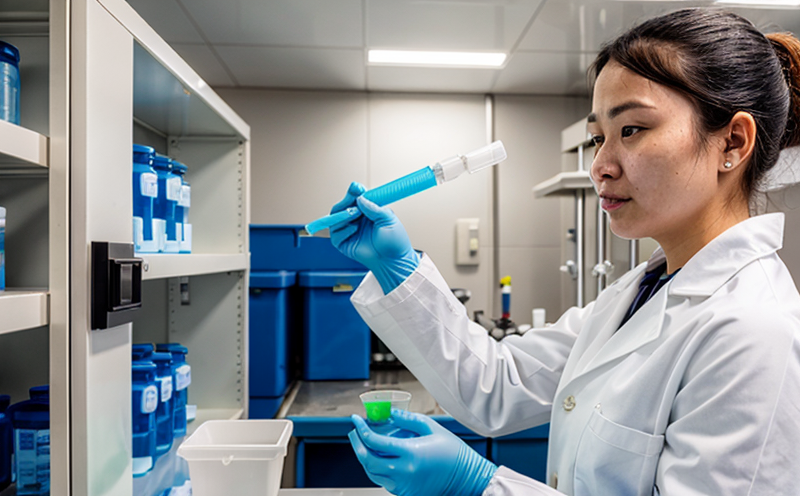USP Aseptic Process Simulation Microbiological Testing
The USP Aseptic Process Simulation (APS) Microbiological Testing service is a critical component in ensuring the safety and quality of pharmaceutical products. This service simulates real-world manufacturing conditions to test the aseptic integrity of sterile drug products, containers, closures, and packaging systems.
During an APS simulation, the laboratory subjects materials under controlled conditions that mimic actual manufacturing processes. The goal is to identify any potential breaches in aseptic processing, which could lead to contamination and compromise product safety. This testing ensures compliance with FDA regulations and USP General Chapter <1112> Aseptic Processing Simulation.
The APS simulation involves several steps, including:
- Preparation of the simulated environment using media fill or other relevant techniques.
- Introduction of test organisms into the system to evaluate its integrity.
- Observation and recording of any contamination or breaches in aseptic conditions.
- Evaluation of data against predefined acceptance criteria.
The testing process is highly specialized, requiring precise control over environmental factors such as temperature, humidity, and air filtration. It also involves the use of sophisticated instrumentation like microbiological testing equipment to monitor and analyze the environment during the simulation.
Compliance with USP General Chapter <1112> is essential for ensuring that pharmaceutical products meet stringent safety standards. This service helps manufacturers identify potential risks early in the development process, allowing them to implement corrective actions before product release. By adhering to these guidelines, laboratories and manufacturers can demonstrate their commitment to quality and patient safety.
The USP APS Microbiological Testing is particularly important for:
- Development of new sterile drug products.
- Evaluation of changes in packaging or processing methods.
- Ensuring compliance with regulatory requirements.
In addition to its role in product development, APS testing also supports the quality assurance processes of pharmaceutical companies. By simulating real-world conditions, this service helps identify potential contamination points and ensures that sterile drug products meet the highest standards of safety and efficacy.
| Application | Description |
|---|---|
| Development of New Products | Evaluating new formulations and packaging materials for aseptic integrity. |
| Process Changes | Ensuring that modifications to manufacturing processes do not introduce contamination risks. |
| Compliance Verification | Confirming adherence to regulatory standards like USP General Chapter <1112>. |
The importance of APS testing cannot be overstated. It serves as a critical tool for ensuring the safety and quality of sterile pharmaceutical products, thereby protecting public health.
Applied Standards
USP Aseptic Process Simulation Microbiological Testing is guided by several internationally recognized standards:
- USP General Chapter <1112> – Aseptic Processing Simulation.
- ISO 14644-1: Cleanroom and associated controlled environment facilities – Classification of air cleanliness.
The USP General Chapter <1112> provides detailed guidelines on how to conduct APS simulations, including the types of organisms to use, the methods for introducing them into the system, and the criteria for evaluating results. It also emphasizes the importance of maintaining aseptic conditions throughout the simulation process.
The ISO 14644-1 standard outlines the classification of air cleanliness in cleanroom environments, which is crucial for ensuring that the APS simulation takes place under appropriate environmental conditions. This standard ensures that the testing environment meets stringent air quality requirements, thereby minimizing the risk of contamination.
By adhering to these standards, laboratories can ensure consistency and accuracy in their APS simulations, leading to more reliable results and increased confidence in product safety.
Industry Applications
USP Aseptic Process Simulation Microbiological Testing finds extensive application across various sectors of the pharmaceutical industry:
- Pharmaceutical Manufacturing: Ensuring that new products and process changes meet safety standards.
- R&D: Identifying potential contamination risks early in the product development cycle.
- Clinical Trials: Supporting regulatory compliance by confirming aseptic processing integrity.
The APS simulation is particularly valuable for:
- Evaluating new sterile drug products or formulations before market release.
- Assessing changes in packaging materials or closures to ensure they maintain aseptic integrity.
- Verifying compliance with regulatory requirements, such as USP General Chapter <1112>.
The results of APS testing provide critical data that pharmaceutical companies can use to make informed decisions about product safety and quality. By identifying potential contamination risks early in the development process, this service helps ensure that sterile drug products meet the highest standards of safety and efficacy.
Quality and Reliability Assurance
The USP APS Microbiological Testing service plays a vital role in maintaining the quality and reliability of pharmaceutical products. By simulating real-world manufacturing conditions, this testing ensures that sterile drug products are free from contamination, thereby protecting public health.
- Contamination Risk Identification: Detecting potential breaches in aseptic processing early in the development process.
- Process Validation: Confirming that new or modified processes meet regulatory requirements.
- Compliance Verification: Ensuring adherence to USP General Chapter <1112> and other relevant standards.
The APS simulation process involves several key steps, including the preparation of the simulated environment, introduction of test organisms, observation and recording of results, and evaluation against acceptance criteria. This rigorous testing ensures that pharmaceutical products meet the highest standards of safety and efficacy.
By adhering to these guidelines, laboratories and manufacturers can demonstrate their commitment to quality and patient safety. The APS simulation is a crucial tool for ensuring the integrity of sterile drug products and protecting public health.





